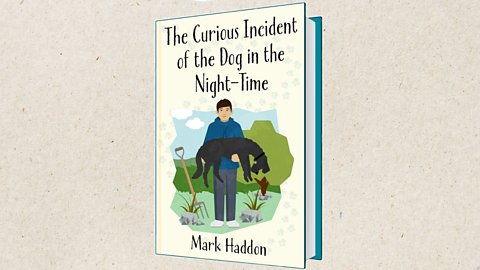Key points

William Goldingтs novel, Lord of the Flies, was published in 1954.
A group of boys are stranded on a deserted island after their plane crashes. There are no adults and the boys struggle to live in harmony. They end up fighting for control and, ultimately, survival.
The novel was inspired by Goldingтs time in the British Navy during World War Two, and his job as a schoolteacher.
The novel explores themes of violence, power and human nature.

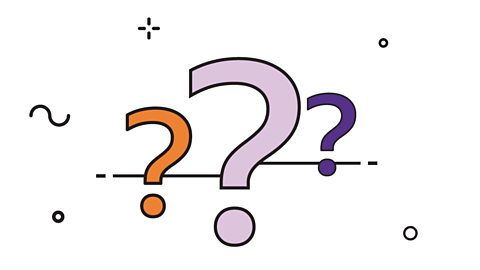
Did you know?
Golding took some of his ideas for Lord of the Flies from another novel called The Coral Island by R.M. Ballantyne.
In The Coral Island, the main characters, also called Jack and Ralph, live and work together in harmony. Golding didnтt think this was realistic and wanted to write a more truthful adventure story.

Plot
After their plane is shot down, a group of English schoolboys are stranded on a deserted island in the Pacific Ocean. There are no adults to look after the boys, who range from six to 12 years old.
At first, they work together to survive. They vote that Ralph, one of the older boys, should be тchiefт and choose Jack to oversee hunting. They create and follow rules, hold meetings and use a conch shellA large, spiral-shaped shell. to show whose turn it is to speak.
They create a signal fire, using a boy called Piggyтs glasses, but it burns out of control. Jack becomes obsessed with hunting the pigs on the island and his group of hunters fail to keep the signal fire going when a ship goes past.
The smaller boys become increasingly frightened by the idea that there is a "beastie" on the island. One night, a dead parachutist gets caught in a tree and the boys think that it is the beast coming to attack them.
Jack and Ralph argue. Jack leaves the group and the hunters follow him. They kill a pig, leaving the head as an offering to the beast.
A quiet boy called Simon has a strange vision where he thinks the pigтs head is talking to him. He faints. When he appears out of the shadows, covered in blood, the boys kill him in a wild frenzy.
Jackтs hunters attack Ralph and his group, smashing the conch, killing Piggy and setting fire to the island. Ralph narrowly misses being killed by the huntersт spears and runs to the beach where he is surprised by a naval officer.
A passing naval ship had seen the fire on the island and launched a boat to investigate. The officer assumes that the boys have been up to "fun and games". The boys stop fighting and begin to cry. They have been rescued.
Activity
Characters
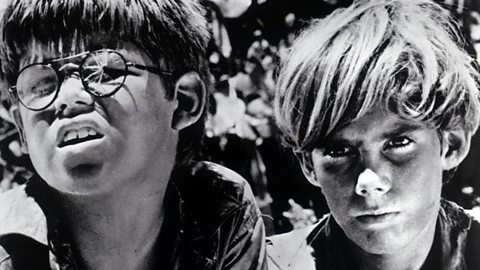
Ralph
Ralph is the protagonistThe main character in a novel, play or film..
He is chosen by the boys to be their leader and tries to create a fair society with clear rules. He is reasonable and decisive.
Ralph is handsome, athletic and one of the oldest, which means the other boys look up to him.

Piggy
Piggy becomes Ralphтs most loyal friend and follower. He wears glasses, suffers from asthma and is overweight. He is clever but most of the other boys canтt see his strengths and donтt respect him.
He has been brought up by his auntie and comes from a lower social class than the other boys.
Jack
Jack is the antagonistA character who creates conflict with the main character..
He is strong-willed, cruel and proud. He is used to being in charge as he is the Head Boy of his school and leads the boysт choir.
Jack wants power and becomes obsessed with hunting and violence.
Simon
Simon is a shy boy and often spends time alone. He has fainting fits and experiences hallucinations.
Simon stands up for others and bravely tries to find out more about the mysterious beast. He is the only one who understands that the beast is not real.
Other characters
Other important character are Roger, Sam and Eric, and The Littluns.
Roger is a quiet, intense boy who enjoys violence and terrorises the others.
Sam and Eric are twin boys who remain loyal to Ralph throughout the novel. They often finish each otherтs sentences and are referred to as "Samneric" by the boys.
The Littluns are the youngest boys, around six years old. They have nightmares about a "beastie" on the island.
Activity
Themes
Themes are the main ideas that appear repeatedly in a novel. Some of the important themes in Lord of the Flies are:
- Violence
- Power
- Human nature
Violence
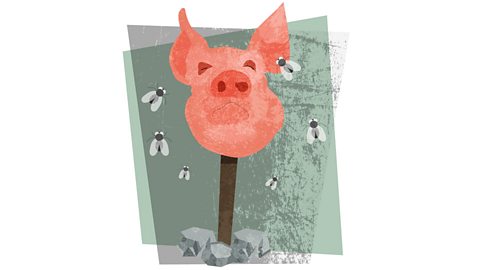
Away from civilisationA civilisation refers to a complex, advanced society with its own cultures and ways of life. and free from rules, the boys quickly begin to turn to violence and cruelty.
Under Jackтs leadership, they hunt and kill pigs. By the end of the novel, they are hunting and killing each other. They chant:
Kill the beast! Cut his throat! Spill his blood!
The characters who resist violence, like Simon, Piggy and Ralph, become victims. It is only when the adults return that the violence stops.

Human nature
In Lord of the Flies, Golding explores the idea that basic human nature is violent and selfish. He questions whether human beings would still behave in a civilised way without rules. For example:
Early in the novel, the boys play when they should be working and choose which rules to obey. As the novel continues, they give in to their fear of an imaginary monster, lose their self-control and increasingly turn to violence.
Before he is killed, Simon begins to understand that all humans have the potential to be violent. He hears the pigтs head, which the boys think is evil, say to him: "You knew, didnтt you? Iтm part of you?"
The novel ends with Ralph realising humankindтs potential for violence too. When he sees the naval officer, Ralph weeps "for the end of innocence, the darkness of man's heart."
Power
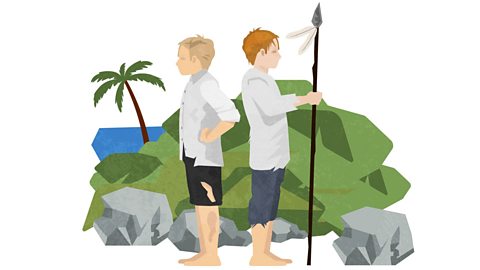
The novel centres around the power struggle between Ralph and Jack. They have different leadership styles:
Ralph represents the kind of power that comes from a democracy when people vote freely to choose their leaders and rules.
Jack represents the kind of power that comes from dictatorship when one person takes complete power and keeps that power through fear and violence.
Piggy clearly identifies the choice the boys need to make:
Which is betterтto have rules and agree, or to hunt and kill?

Did you know?
Lord of the Flies can be read as an allegory, which is a story with a hidden meaning. The main characters all represent something.
What do Ralph, Jack and Simon represent?
The boysт choices and actions represent the potential for good or evil in every human being.
Ralph represents civilisation, order and democracy. These things are needed in society to maintain control and make sure that people behave in a safe way.
Jack represents violence, disorder and dictatorship. He quickly gives in to his inner bloodlust, rejects rules and embraces chaos.
Simon represents the natural world and human goodness. He is killed by the boys when they give in to violence.

Language
Writers choose words and phrases carefully when they write. Readers can look closely at texts to think about how and why the writer made these choices.
Symbolism
In Lord of the Flies, Golding uses symbolsA symbol is an object, person, image or event used to represent something bigger. For example, doves are often used as a symbol of peace. to suggest deeper ideas to the reader. Symbols stand for something else beyond their literal meaning.
Piggy's glasses
Piggy's glasses help him to see. They are also a tool that can be used to start a fire.
What do Piggy's glasses symbolise?
Piggy's glasses symbolise clear thinking, science and technology.
Piggy is the thinker of the group and his glasses suggest his intelligence.
Once the glasses are broken, Piggy loses his power to influence the boys.
When Jack and his group steal Piggy's glasses, the power of creating fire falls into the wrong hands.
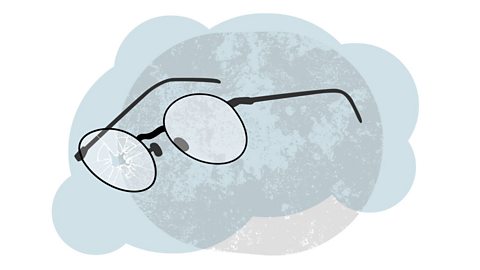
Fire
The boys use Piggy's glasses to create fire. They build a signal fire to catch the attention of passing ships, but it soon burns out of control.
What does fire symbolise?
Fire symbolises both hope and destruction.
At the start of the novel, the boys build a signal fire in the hope of rescue. It burns out of control and a Littlun goes missing. Jack's hunters are given the responsibility of maintaining the fire in case a ship passes, but they soon become more interested in hunting.
At the end of the novel, Jack's hunters deliberately set a fire to force Ralph out of the jungle so they can hunt him.
The fires destroy the natural beauty of the island.
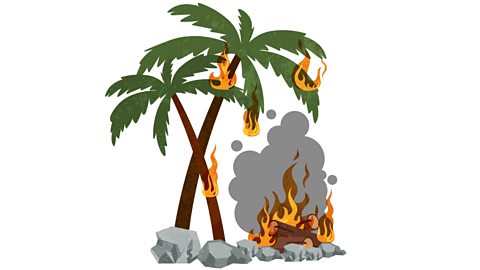
The conch
The conch is a beautiful, spiralled shell which makes a loud sound when blown into. The boys use this sound to signal when to gather for a meeting.
What does the conch symbolise?
The conch symbolises law, order, democracy and civilisation as it helps the boys work together.
When Jack leaves the group, he rejects the conch shell and what it stands for.
When the shell is destroyed, it symbolises the destruction of civilisation and the boys become murderous and wild.
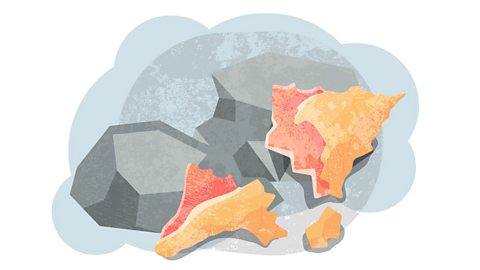
Structure
Structure refers to how written text is organised т the way the story is ordered and shaped.
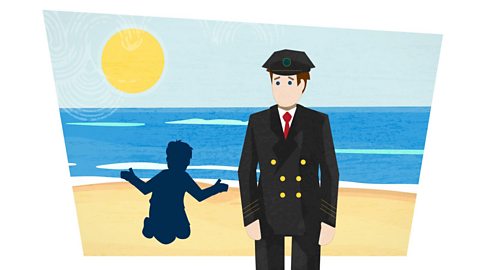
The ending
The novel ends with the boys hunting Ralph as the island burns. It is only the unexpected arrival of the naval officer that saves him.
Golding uses a series of contrasts to highlight the differences between the beginning and the ending of the novel. For example, at the start the island is "dazzling" and the lagoon is filled with "glittering" fish. At the end, it is a "burning wreckage", covered in "black smoke".
Golding also uses contrasts to show how the boys become more uncivilised and violent throughout the novel. For example, with Ralph:
| Beginning | End |
|---|---|
| "attractive", confident, oldest | "filthy body, matted hair, and unwiped nose" |
| excited about тno grown-ups!т | crying "great, shuddering spasms of grief" |
| uninterested in Piggy | grief-stricken after witnessing Piggyтs death |

Does Lord of the Flies have a happy ending?
The boys have been rescued so it seems like a traditional happy ending, but the answer is more complicated.
The fact that the adult is a naval officer and the cruiser is a warship reminds us that while the boys have been fighting amongst each other on the island, there is a real war going on. The reader is left wondering whether all human beings are naturally violent and destructive.
Activity
Context
The contextThe factors surrounding a text that help us to understand it; the background events that help to explain something. in which a novel was written can sometimes tell you more about its themes, message and meaning.
World War Two
Lord of the Flies was published in 1954, less than 10 years after the end of World War Two. At the end of World War Two, atom bombA nuclear weapon that releases a huge amount of energy by splitting atoms. They can cause an enormous amount of death and damage when dropped on an area. were dropped for the first time by the Americans on the Japanese cities of Hiroshima and Nagasaki. Throughout the 1950s, when Golding was writing, people were terrified that another war would mean the whole world being destroyed by nuclear bombs.
This fear is reflected in Lord of the Flies as the fictional world is at war, which explains why the boysт plane was shot down. Piggy even thinks an atomic bomb has gone off and they wonтt be rescued at all.
You can learn more about what happened at Hiroshima and Nagasaki in this Bitesize History guide on World War Two.
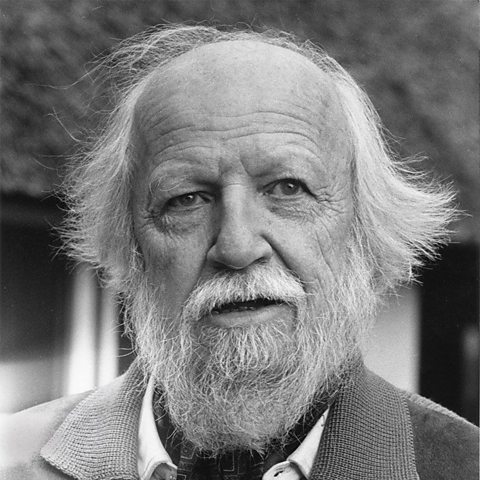
William Golding
Golding served in the British Navy during the Second World War (1939-1945) and believed that wars were more about human nature than politics.
He also worked as a schoolteacher before and after his navy career, and noticed how cruel children could be to each other.
He brought these ideas together in Lord of the Flies to show how quickly human beings can turn to violence.

Test your knowledge
Play Bitesize secondary games. gamePlay Bitesize secondary games
Have fun playing science, maths, history, geography and language games.

More on Literature
Find out more by working through a topic
- count11 of 18

- count12 of 18
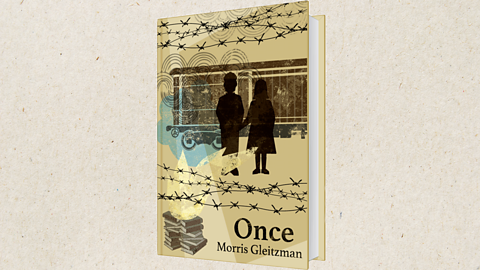
- count13 of 18

- count14 of 18
